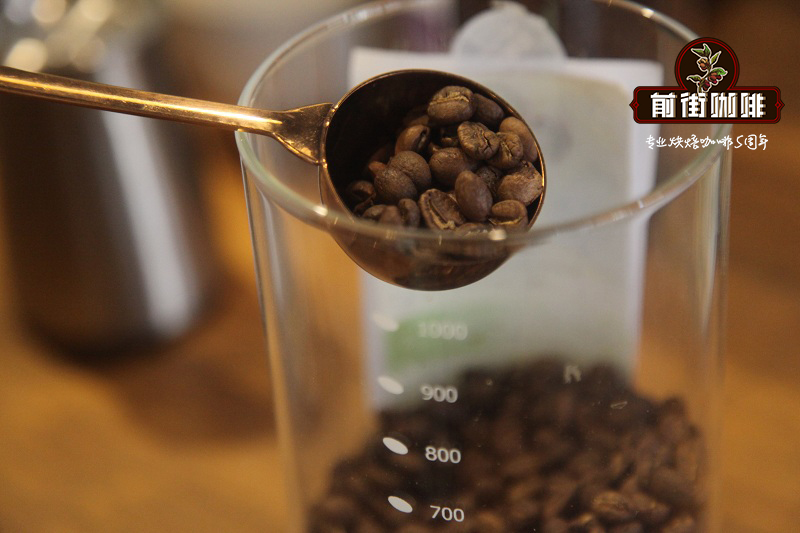Costa Rican honey processing coffee beans the story introduces what kind of honey coffee is good in Costa Rica

Professional coffee knowledge exchange More coffee bean information Please pay attention to coffee workshop (Weixin Official Accounts cafe_style)
All along, I thought Golden bean is "golden mantinin", did not know that the original "golden bean" in Costa Rica is another name for coffee, Costa Rica laws and regulations will coffee this crop is very heavy, today can not grow Robusta, this country for coffee is very serious.
Costa Rican Coffee's Origins
Coffee beans are an agricultural product with a long history in Costa Rica. At the end of the 18th century, coffee was planted in Costa Rica's central valley. The cultivation conditions of "the right time, the right place and the right people" made coffee quickly red in Costa Rica.
Costa Rica's first coffee exports were to Panama and Chile, and coffee soon surpassed tobacco, sugar and cocoa in export earnings.
The impact of coffee on Costa Rica
In the 19th century, the government realized the enormous potential of coffee in Costa Rica and began offering free land to coffee farmers.
When Costa Rican coffee was booming, William Le Lacheur Lyon, a captain in England, brought a small amount of Costa Rica back to England. Since then, Costa Rican coffee has been booming again, and Britain has also become Costa Rica's largest exporter.
In this way, coffee has created countless employment opportunities, from growers, pickers, screeners, traders and so on, which has enabled Costa Rica's coffee industry to accelerate economic development and gradually modernize Costa Rica.
Through coffee, Costa Rica built a railway to the Atlantic coast and a national theater in San Jose. Costa Rica has more than 70,000 coffee growers, of whom more than 40,000 coffee growers belong to Fair Trade Cooperatives, which are committed to providing more fair prices for green beans for small farmers, protecting farmers 'rights and improving the growing environment and conditions of coffee.
Of course, the reason why Costa Rica coffee is famous in the world is that in addition to its strict requirements and controls on the quality of coffee, the processing method and flavor also have a contribution.
Flavor of Costa Rican honey-treated coffee beans
Honey-treated, that's the word for Costa Rica; coffee treatment is diverse and varied, but when we mention honey-treated, Costa Rican honey-treated coffee beans naturally appear in our conversation.
A lot of friends have a misunderstanding "honey processing is added how much honey, honey processing what honey?"
These questions are obviously very consistent with the name, but they do not match the reality.
Honey processing, is a South American country original is also no way derived from a processing method.
South American countries in the 1970s and 1980s "led by Brazil" because they did not have a lot of water to wash coffee beans, and to a lesser extent, they used a shelling machine to remove cherry shells and then directly dry pectin, which is the way honey treats beans. The honey treatment method keeps the coffee clean after washing, although the brightness of the coffee decreases, but the later sunlight increases the sweetness and caramel taste; according to the degree of honey treatment, the honey treatment coffee is divided into yellow honey treatment, red honey treatment and black honey treatment.
Honey processing is divided into five grades: white honey, yellow honey, gold honey, red honey, black honey; the corresponding pectin retention and different shed drying, flavor naturally has differences.
White honey: retain 10-20% pectin
Yellow honey: retain 25-50% pectin
Red honey: retain 50-80% pectin
Black honey: retains 100% pectin
Golden honey: retain 100% pectin (fermentation time varies)
For more is how to sun, sun how long, these some we can skip temporarily, after all, we are more concerned about their follow-up performance.
In terms of sweetness, black honey treated beans are quite high, while in terms of cleanliness, white honey is better than black honey.
As for flavor presentation, red honey and yellow honey are better than others, and my concept of golden honey only stays on the article, and I haven't drunk it yet, so I don't comment much.
Note: Now most of the honey treatment is based on the degree of fermentation, pectin retention is only a reference state, for example, 100% pectin can also be made into yellow honey or red honey through fermentation.
Costa Rican honey processed coffee bean flavor: mild acidity, high sweetness, rich fruit flavor and dried fruit flavor.
END
Important Notice :
前街咖啡 FrontStreet Coffee has moved to new addredd:
FrontStreet Coffee Address: 315,Donghua East Road,GuangZhou
Tel:020 38364473
- Prev

Costa Rica DOTA Coffee Grade introduction _ what kind of coffee is good in Costa Rica?
Professional coffee knowledge exchange more coffee bean information please follow the coffee workshop (Wechat official account cafe_style) Costa Rica coffee grade introduction from Costa Rica beautiful three-eyed sand butterfly, led to a series of coffee stories related to Costa Rican SHB DOTA Tarazu AA coffee raw beans, this may be the so-called butterfly effect! Costa Rica
- Next

How do you cook Costa Rican coffee? how do you drink Costa Rican coffee beans?
Professional coffee knowledge exchange more coffee bean information Please follow the coffee shop (Wechat official account cafe_style) bought Costa Rican coffee beans in the coffee shop, do not feel good, do not know how to cook good. Costa Rican coffee is produced in the Republic of Costa Rica (The Republic of Coffee) in the south of Central America, and its quality is similar to that of Colombian coffee.
Related
- Detailed explanation of Jadeite planting Land in Panamanian Jadeite Manor introduction to the grading system of Jadeite competitive bidding, Red bid, Green bid and Rose Summer
- Story of Coffee planting in Brenka region of Costa Rica Stonehenge Manor anaerobic heavy honey treatment of flavor mouth
- What's on the barrel of Blue Mountain Coffee beans?
- Can American coffee also pull flowers? How to use hot American style to pull out a good-looking pattern?
- Can you make a cold extract with coffee beans? What is the right proportion for cold-extracted coffee formula?
- Indonesian PWN Gold Mandrine Coffee Origin Features Flavor How to Chong? Mandolin coffee is American.
- A brief introduction to the flavor characteristics of Brazilian yellow bourbon coffee beans
- What is the effect of different water quality on the flavor of cold-extracted coffee? What kind of water is best for brewing coffee?
- Why do you think of Rose Summer whenever you mention Panamanian coffee?
- Introduction to the characteristics of authentic blue mountain coffee bean producing areas? What is the CIB Coffee Authority in Jamaica?

